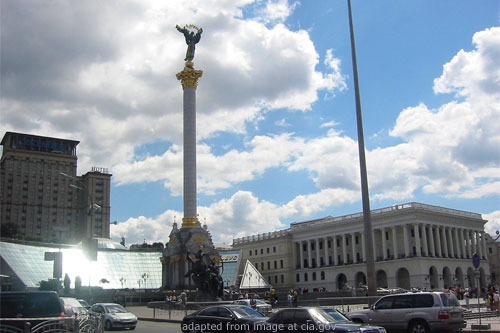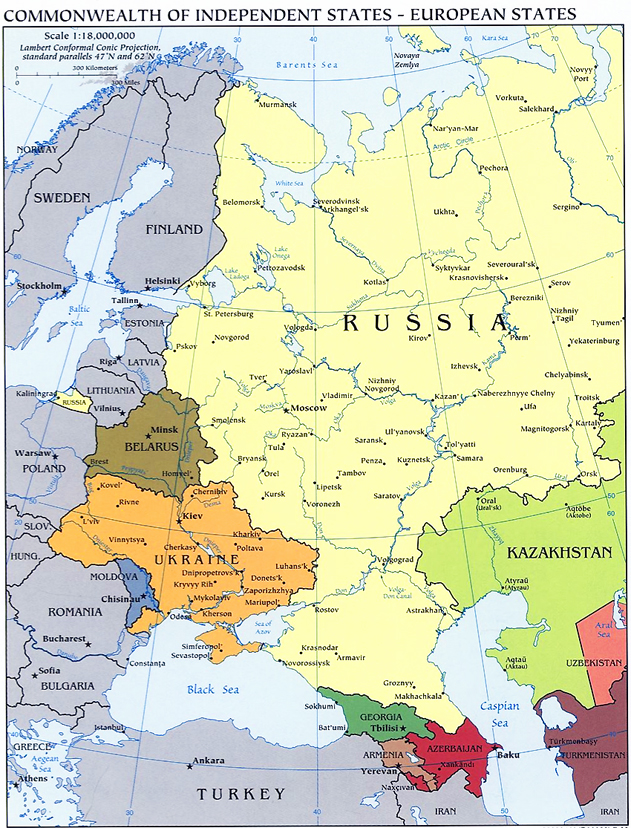What’s Next As Kiev Crunches Rebels?

(Moscow Times – themoscowtimes.com – Alexey Eremenko – June 18, 2014) As Ukrainian separatists concede imminent defeat unless Russian tanks roll in, it is time for Kiev to consider plans for reconciliation with the rebel regions, Russian and Ukrainian analysts said.
Local elites that tacitly endorsed the separatists at first in hopes that they could be used as a bargaining chip against Kiev appear to have ceased to be a problem, having been demoralized by the rebellion spinning out of control.
But President Petro Poroshenko must also calm down the war-hit populace in the country’s east in order to prevent the rebel provinces from turning into Chechnya-style hotbeds of festering dissent, experts said.
This means Poroshenko will likely have to grant at least some of separatists’ demands for greater autonomy, though secession to join Russia is no longer on the mainstream public agenda, according to analysts interviewed by The Moscow Times on Tuesday.
Throwing in the Rebel Towel
Iconic separatist warlord Igor Strelkov said in a YouTube video appeal late Monday that the insurrection in the Donetsk and Luhansk regions in eastern Ukraine stands to be crushed within a month.
The rebels are outnumbered and outgunned by the governmental forces, which can field hundreds of tanks against three battle machines operated by separatists, Strelkov said.
“It is not even David versus Goliath, it is an ant versus an elephant,” he added.
Ukrainian forces have been pushing back against the separatists in recent weeks following a string of setbacks during the rebellion’s initial launch this spring.
The decisive military effort is courtesy of Poroshenko, who won the presidential elections in May on the promise to end the insurrection.
But defeating Strelkov and other commanders is just a table stake in the game to bring under Kiev’s control the rebellious Donbass region, as Donetsk and Luhansk are sometimes called, experts said.
Local Elites and ‘Controlled Chaos’
Much depends on the local elites, especially tycoons who hold a great deal of informal sway in the Ukrainian regions, such as “Donbass king” Rinat Akhmetov.
Akhmetov was accused of flirting with the rebellion: Rebel leader Pavel Gubarev in May explicitly claimed that the coal and steel magnate, whose current net worth was estimated by Forbes to be about $12 billion, had two-thirds of the local separatists on his payroll.
Experts said at the time that Akhmetov was looking to use “pet separatists” as leverage against the new government in Kiev. The tycoon had reasons to fear a crackdown, given his affiliation with Poroshenko’s predecessor Viktor Yanukovych, who was ousted by a popular uprising in February.
But the hypothetical “controlled chaos” would only have worked if Akhmetov did actually control the rebels – which, experts agreed, he did not.
Akhmetov has denounced the rebellion since it escalated from a bloodless series of office-building seizures to organized warfare. He fled to Kiev after a mob briefly besieged his mansion in Donetsk.
Even assuming the existence of “pet separatists,” their activity has spiraled out of the Donbass establishment’s control, leaving it firmly on Kiev’s side, said Vladimir Fesenko of nonprofit think tank Penta in Kiev.
“Local elites may have been hedging their bets by supporting the separatists,” he said. “But … the tactics failed.”
However, local power brokers will still be useful for Poroshenko once the hostilities end, said Alexei Titkov, a political analyst with the Higher School of Economics in Moscow.
A reconciliation effort will require cooperation from local lawmakers and officials on the ground – all of whom are more than willing to listen to Akhmetov, the biggest employer in the region, Titkov said.
Seducing the Masses
While local elites may be relatively easy for Poroshenko to contend with, the 6.6 million residents of the Luhansk and Donetsk regions pose a tougher challenge.
The two primarily Russian-speaking regions have always been distrustful of the Ukrainian nationalists, who were the driving force behind Yanukovych’s ouster.
Reports of civilians having been killed or forced to seek refuge from areas affected by the ongoing infighting, while possibly exaggerated by pro-Kremlin media, has done a lot to fortify this distrust.
The rebellion has parallels to the conflict in Russia’s Chechnya, Alexei Arbatov of the Carnegie Moscow Center said.
What began as a limited anti-separatist offensive in the North Caucasus in 1994 escalated into a 15-year-long bloodbath as much of the population took up arms after civilian casualties mounted from governmental attacks.
The situation is not the same in Donetsk and Luhansk because the majority of the population is strongly opposed to any hostilities, despite support for the separatists, analysts agreed.
Nevertheless, the separatist sentiment cannot be capped by tanks and mortar strikes alone, no matter how successful, Arbatov said.
“Too much resentment and hate have been bred by the fighting,” Arbatov said.
“Kiev will need to make sweeping concessions if they know what’s good for them,” he said.
Negotiation points advanced by the experts included: increased legal protection of the Russian language, elections of top regional officials – currently appointed by the central government – and a bigger say for the regions in handing their own taxes.
Poroshenko already pledged in his inaugural speech earlier this month more power to the regions and guarantees for Russian speakers.
“The other option is a protracted urban guerilla war,” said Fesenko of Penta. “Keep in mind, the region is saturated with firearms.”

